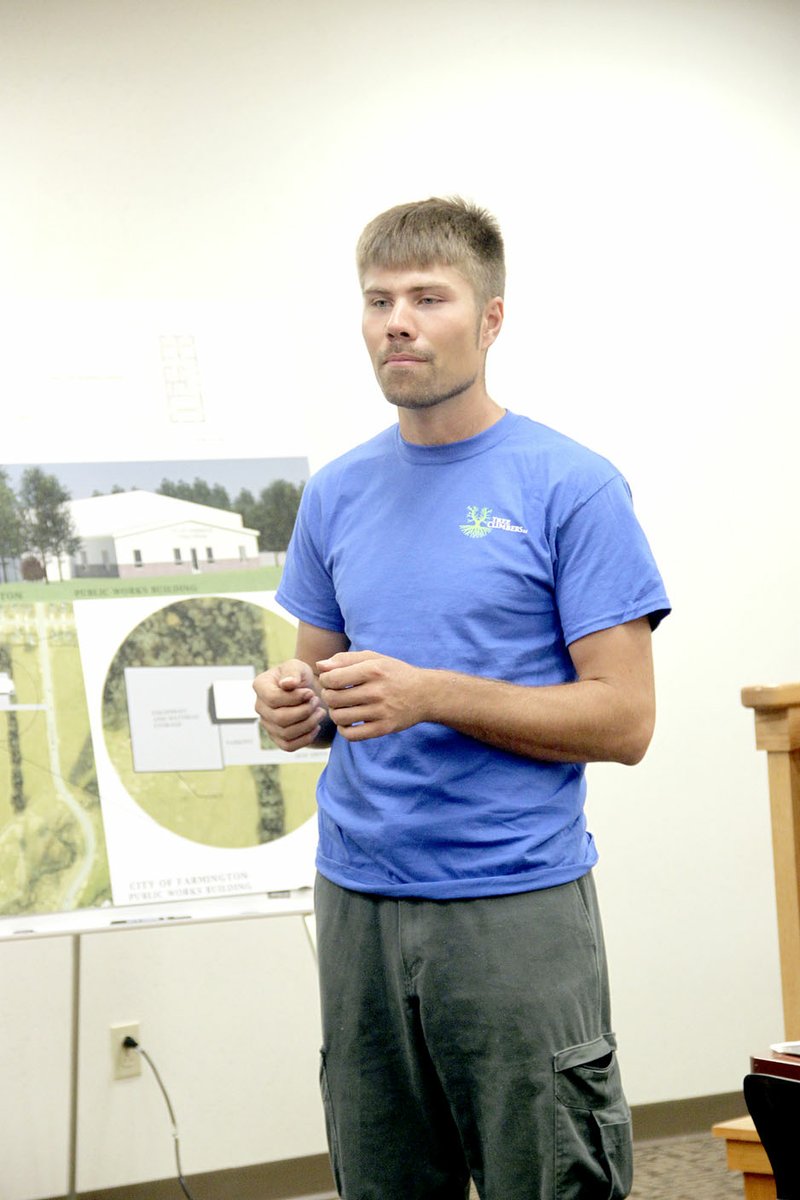FARMINGTON -- Jeremy Williams can tell stories about climbing trees as a child but now he climbs trees as a certified arborist, certified tree climber and a certified tree-care safety professional.
An experience he had as a youngster pointed him to a career taking care of trees.
He pruned the branch from a hackberry growing near his house and said he thought he was cutting it the right way when he dug into the trunk to make sure the limb would not grow back. Within a few years, the tree died.
"I thought there had to be a better way," Williams said.
Now, he knows the best place to prune a branch is just outside the branch collar, a swell that grows where the branch and trunk connect. The branch collar provides a natural barrier to disease and insects.
When Williams pruned the hackberry branch off at the trunk, it left the tree open to disease and insects.
Williams was the most recent speaker for the Farmington Garden Club. He is owner of Tree Climbers LLC of Fayetteville.
Williams talked to Garden Club members about three main areas of taking care of trees: planting, mulching and pruning.
"If a tree is not planted right, it will not have a good future," Williams told club members.
For one, he said homeowners should look for a trunk that flares out and when planting, the flared area needs to be level with the ground. Most people plant their trees too deep versus not deep enough, he said.
He said many times trees that are purchased in pots will have roots going around and around at the bottom of the pot. These roots can be cut off, Williams said.
"Cutting roots is just like cutting branches. You make clean cuts."
Trees need water but homeowners and others have to be careful not to water too much. If an area has not had rain in three weeks, Williams said he encourages people to water their trees.
Mulch is great for a newly planted tree for the first three years but after that, it does not have much use, he said. Mulch has three purposes, he said. It provides water storage, especially for new trees, is organic matter that will decompose, and is aesthetically pleasing. Mulch also protects a tree from a lawnmower or weedeater.
Mulch should not be placed right next to a tree but should be about three to four inches away from the trunk. The gap provides oxygen for the tree.
"It you want to put down mulch that's great as long as it's not against the trunk," Williams said. "If you don't want mulch, that's fine too."
Homeowners and others also should not use fabric or a weed barrier under the mulch. This prevents oxygen from getting to the roots.
"A fabric barrier inhibits oxygen transfer and that brings roots up to the surface," Williams said.
The best time to prune live trees is during the winter.
"It's better then because in the winter a tree has stored a lot of energy in the roots," he said, protecting the tree from the pruning cuts.
He said he recommends pruning a limb at the branch collar, not pruning it halfway up the branch.
For more information about Williams' firm, go to TreeClimbersLLC.com.
General News on 10/12/2016
